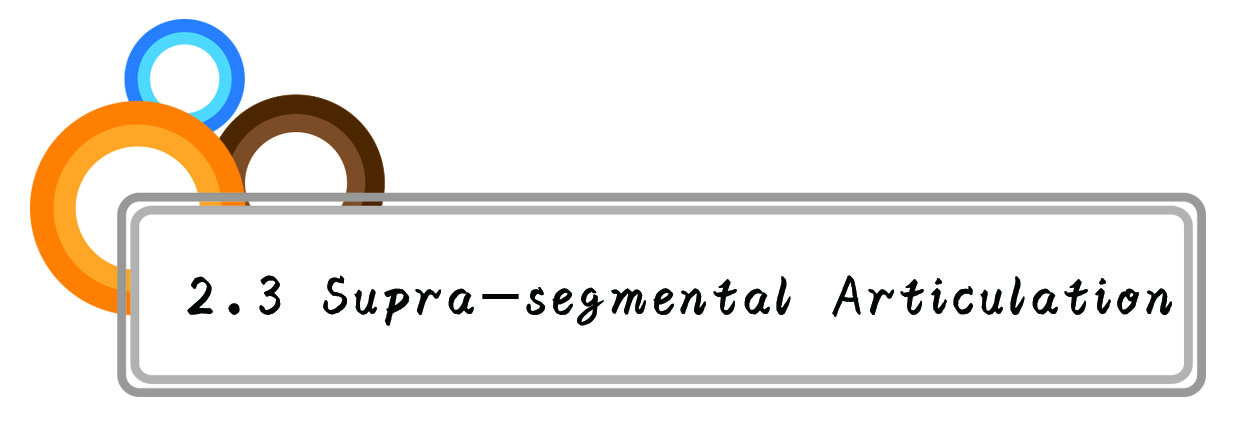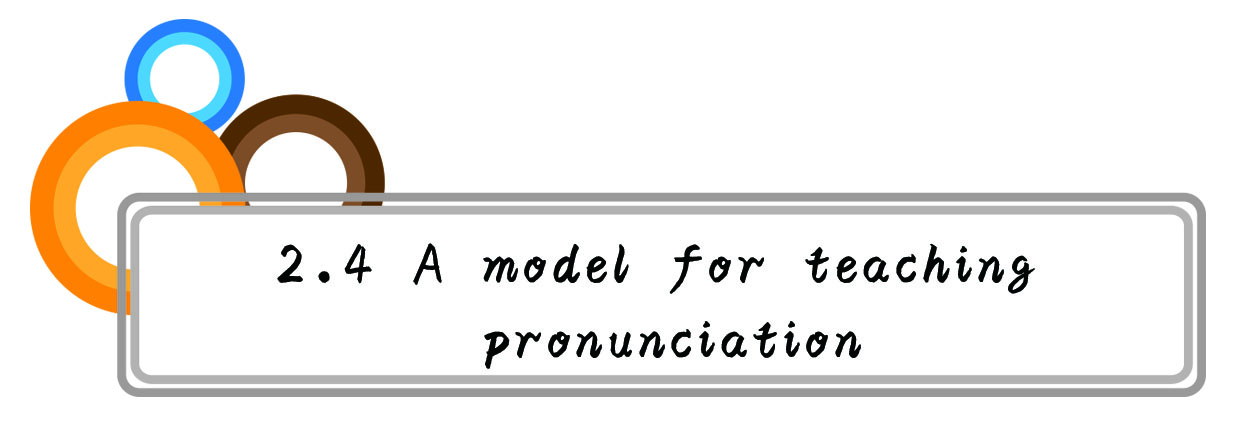


Pronunciation is the way a certain sound or sounds are produced. Unlike articulation, pronunciation refers to the actual production of speech sounds in the mouth, and it stresses more the way sounds are perceived by the hearer.

语音是语言的物质外壳,是语言口语交流的基本物质单位,是语言的音、形、义三要素中的首要因素。“语音教学是语言教学的重要内容之一。自然规范的语音、语调将为有效的口语交际打下良好的基础。”
--《英语课程标准》
A speaking knowledge of a language requires very close to a 100% control of the phonology and control of from 50 to 90 % of the grammar, while one can frequently do a great deal with 1% or even less of the vocabulary. —H. A. Gleason
Without pronunciation, the language could become a dead one and communication would be difficult. If one’s pronunciation and intonation are poor, he cannot pronounce words correctly, and if he does not pronounce words correctly, he will have great difficulty in understanding or in memorizing the words he has learned, and others will fail to understand him. Therefore,pronunciation can be regarded as “rules for playing a game”. Otherwise, you will not enjoy the fun of playing.

The purpose is to apply English phonetics to communication better.

(1) Ss’ ignorance in learning pronunciation;
(2) Teacher’s neglect in pronunciation teaching;
(3) Mother tongue interference;
(4) Improper way of teaching.


Phonics (Alphabetic method) is a method of teaching children to read. It is commonly used in teaching reading in the mother tongue. Children are taught to recognize the relationship between letters and sounds. They are taught the sounds which the letters of the alphabet represent, and then try to build up the sound of a new or unfamiliar word by saying it one sound at a time. Children are taught the names of the letters of the alphabet –a “ay”, b “bee”, c “see”, etc. –and when they see a new or unfamiliar word, e.g. bag, they repeat the letter names- “bee ay gee”. It is thought that this “spelling” of the word helps the child to recognize it.

Phonetic alphabet: a way of transcribing the sounds of speech through a carefully designed set of symbols, as in the IPA (International Phonetics Alphabet). There are 44 phonemes in it within which 20 vowel phonemes and 24 consonant ones are included.
Phonemes: the sounds of a language that are systematically distinguished from each other, e.g. /s/ from /t/ in ‘same’ and ‘tame’.
Fig 1: Phonemes in IPA

Stress, Rhythm, Intonation (We will discussion this topic in the next chapter)

We may choose a model for teaching pronunciation. RP or ELF?
RP (Received Pronunciation) is the usual accent of British English given in books about English, spoken by a small minority in England.
ELF (English as lingua franca) is English used as a means of communication among people with different first languages rather than between natives.
In terms of pronunciation, apart from those living in English-speaking countries, what is the point of making learners of English understand and use a native standard accent like RP when virtually everybody they will meet is a fellow non-native speaker? The goal should be an accent that is maximally comprehensible by non-native speakers, leaving the native speaker out of the equation. So we may teach lingua franca pronunciation.
The lingua franca pronunciation core Elements of English pronunciation that need to be right to avoid problems between students with different L1s: 1. All consonants except for /T~W / which can be dispensed with. 2. Aspiration after voiceless plosives /p~t~k/ needs to be maintained in ‘spy’, ‘sting’, ‘scorn’, etc. 3. Simplification of initial clusters should be avoided e.g. ‘product’ as / pɒdQkt/. 4. Pure vowels should be longer before voiced consonants than before voiceless consonants in, say, ‘bad/bat’, ‘league/leak’, ‘bard/bart’. The placement of the nuclear tone in the tone-groups is vital; `John is here`/ `John is here` /`John is here`, but not choice of tone. |

(1) Consistency: smooth & natural
(2) Intelligibility: understandable in communication
(3) Communicative efficiency: being understood


(1) Differently treat different sounds and different levels of Ss. Teachers should be aware which sounds are going to improve gradually and which are never going to improve, so that these can be treated differently. Pronunciation teaching should relate to the particular stage the learner is at, emphasizing individual words at the beginning, relating pronunciation to the first language for intermediates, and treating the sound system of the new language in its own right for advanced students.
(2) Foster intelligibility during spontaneous speech. Contemporary teachers and learners realize that efforts to communicate meaningfully are even more important than perfect pronunciation. Lessons should engage learners in using sounds in more personalized ways and through more spontaneous ways of speaking.
(3) Keep affective considerations firmly in mind. Emotions can run high whenever language learners are asked to develop new pronunciation habits. Teachers need to provide learners with generous degrees of affective support for some Ss who always worry about their pronunciation poorer than others.
(4) Avoid the teaching of individual sounds in isolation. Phonemes are part of a system of contrasts in the students’ minds, not discrete items. It is almost always more effective to illustrate and practice sounds within contexts of whole phrases, short sentences, and interactive classroom tasks. Activities for learners to communicate meaningfully should be more interesting, enjoyable, and memorable.
(5) Provide feedback on learner progress. Imitation/repetition may not be helpful without feedback. Such feedback can be provided by you as the classroom teacher, by peers, and through self-awareness training in conjunction with live analysis, video, and/or audio recordings.
(6) Realize that ultimately it is the learner who is in control of changes in pronunciation. In the pronunciation class, the teacher is a “language coach”: who supplies information; gives models from time to time; sets high standards; provides a wide variety of practice opportunities; and supports and encourages the learner.

1)imitation of teacher or recorded model of sounds, words and sentences;
2)recording of learner speech, contrasted with native model;
3)systematic explanation and instruction;
4)imitation drills;
5)choral repetition of drills;
6)varied repetition for drills;
7)learning and performing dialogues;
8)learning be heart of sentences, rhymes, jingles;
9)jazz chants;
10)tongue twister;
11)self-correction through listening to recording of own speech.
● Attention please: Teaching of pronunciation should be lasted during whole process of primary & middle school teaching!

Cook, V. Second language learning and language teaching (4th ed.) [M]. Edward Arnold Ltd, 2008.
Celce-Murcia, M., D. M. Brinton & J. M. Goodwin. Teaching pronunciation: A Reference for teachers of English to speakers of other languages [M]. Beijing: Chinese People University Press, 2002.
Lewis, M. & Hill, J. Practical techniques for language teaching [M]. Beijing: FLTRP & Cengage Learning, 2009.
Nunan, D. Practical English language teaching [M]. Beijing: Tsinghua University Press, 2013.
Richards, J. C. & R. Schmidt. Longman dictionary of language teaching and applied linguistics [M]. Beijing: FLTRP, 2003.
(英))Marks, J. English pronunciation in use (Elementary). 姚虹等译.北京:北京语言大学出版社, Cambridge:CUP.2012.

Q1: What does phonics mean? Why is teaching phonics significant?
Q2: Which one is more important, intelligible pronunciation or native-like pronunciation? Why?
Q3: Please illustrate that “we can’t teach pronunciation in isolation”.
Q4: Do you think “repetition” is helpful for improving pronunciation ability?




















